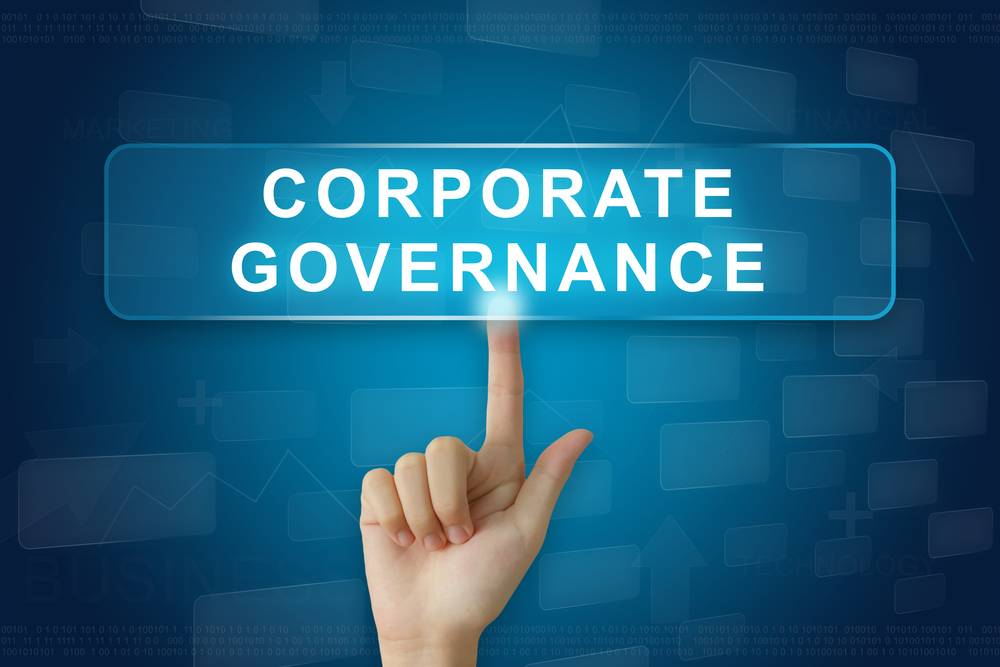In the wake of a rapidly changing global landscape, corporate governance is no longer a static set of rules but a dynamic, evolving framework. From the increasing demands for sustainability and ethical conduct to the pressures of a digital-first economy, the traditional model of corporate oversight is being challenged and reshaped. Corporate Governance Shakeups refers to the significant shifts in the principles, practices, and legal expectations that govern how companies are directed and controlled. This article will provide a comprehensive look into the key drivers behind these transformative changes, the new rules and regulations being implemented, and the strategic implications for boards of directors, executives, and investors. We will explore how a focus on stakeholder capitalism, a push for greater transparency, and the integration of new technologies are defining the next chapter of corporate governance.
The New Drivers of Corporate Governance

The shakeup in corporate governance is being driven by a confluence of powerful forces that are demanding more from companies than just financial performance. These drivers are changing the very purpose of a corporation.
A. The Rise of Stakeholder Capitalism: The traditional model of shareholder primacy, which holds that a company’s sole purpose is to maximize shareholder value, is being challenged by a new philosophy: stakeholder capitalism.
- Broader Responsibilities: This model argues that a company should serve the interests of all its stakeholders, including employees, customers, suppliers, and the communities in which it operates. This means that a board’s fiduciary duty is expanding beyond just shareholders to a broader set of constituencies.
- Legal and Social Pressure: This shift is not just a philosophical one. It is being driven by legal and social pressure from a new generation of employees and consumers who want to work for and buy from companies that have a clear social and environmental purpose.
B. The ESG Imperative: Environmental, Social, and Governance (ESG) criteria have moved from a niche consideration to a central pillar of corporate strategy and a major driver of governance change.
- Investor Demands: Institutional investors and asset managers are increasingly using ESG factors to make investment decisions, seeing strong ESG performance as an indicator of a well-managed and resilient company. This has created a powerful incentive for boards to integrate ESG into their oversight function.
- Regulatory Scrutiny: Regulators, particularly in the U.S. and Europe, are moving towards mandatory ESG disclosure, which is compelling companies to be more transparent about their environmental impact, social policies, and governance structures. This increased scrutiny is leading to a new era of legal and reputational risk for companies that fail to live up to their ESG claims.
C. The Technology and Data Revolution: The rapid pace of technological change and the growing importance of data have introduced new governance challenges related to cybersecurity, AI ethics, and data privacy.
- Cybersecurity Oversight: The board of directors is now legally and ethically responsible for overseeing a company’s cybersecurity risk. A major data breach is not just a technical failure; it is a governance failure that can lead to lawsuits and regulatory fines.
- AI Governance: As companies increasingly use AI in their operations, boards must grapple with the ethical and legal implications of this technology, including issues of algorithmic bias and data privacy. A failure to govern AI responsibly can lead to significant reputational and legal harm.
D. The Push for Diversity and Inclusion: The push for greater diversity on corporate boards is a major governance shakeup.
- Improved Decision-Making: Research has consistently shown that diverse boards lead to better decision-making and improved financial performance. They bring a wider range of perspectives and experiences to the table, which can help a company to better understand its customers and navigate complex challenges.
- Legal and Social Mandates: Governments and regulators are also mandating greater diversity on boards. Some states, for example, have passed laws requiring a certain number of women or people from underrepresented groups on corporate boards. This is creating a new legal and social imperative for companies to diversify their leadership.
The New Rules of Corporate Governance

In response to these drivers, a new set of rules and best practices are emerging, fundamentally changing the role and responsibilities of a corporate board.
A. Enhanced Board Oversight of Risk: Boards are taking a more proactive and holistic approach to risk management.
- Risk Committees: Many boards are creating new committees or expanding the mandate of existing ones to focus specifically on technology, ESG, and reputational risk.
- Crisis Preparedness: Boards are also placing a greater emphasis on crisis preparedness, including having clear communication protocols and a strategic plan for responding to a major event, such as a data breach or an environmental disaster.
B. Greater Transparency and Disclosure: The new era of corporate governance is demanding more transparency from companies.
- Beyond Financials: Companies are being compelled to disclose more than just their financial results. This includes their ESG performance, their diversity metrics, their climate-related risks, and their political spending. This increased transparency is a key tool for building trust with stakeholders.
- The Role of Technology: Technology can be a powerful tool for transparency. Companies can use data analytics and AI to track and report on their ESG performance, providing a level of rigor and accuracy that was previously impossible.
C. The Evolution of Executive Compensation: The way companies compensate their executives is also changing.
- ESG-Linked Pay: There is a growing trend of tying executive compensation to ESG metrics, such as a reduction in carbon emissions or an improvement in diversity. This aligns the incentives of executives with the long-term, sustainable goals of the company.
- Stakeholder-Oriented Metrics: Compensation is also being tied to stakeholder-oriented metrics, such as customer satisfaction and employee engagement. This is a clear signal that a company’s value is no longer just measured by its stock price.
D. The Redefined Role of the Board Chair and Lead Director: The role of the board chair and lead director is becoming more critical.
- Independent Oversight: In many companies, the role of the CEO and the chair of the board are being split to ensure a greater degree of independent oversight.
- Facilitating Dialogue: The board chair and lead director are also playing a more active role in facilitating a dialogue with key stakeholders, including institutional investors and proxy advisory firms.
Strategic Implications for Businesses and Investors
The shakeup in corporate governance presents both significant risks and profound opportunities for businesses and investors.
A. For Businesses:
- Risk Mitigation: Companies that fail to adapt to these new rules will face a new era of legal liability, regulatory fines, and reputational damage. The best defense is a proactive approach to governance, with a focus on transparency, accountability, and a clear purpose beyond profit.
- Competitive Advantage: Companies that embrace this new era of governance will have a significant competitive advantage. They will be more attractive to a new generation of talent, more resilient to future challenges, and more appealing to a growing pool of socially conscious investors.
- Innovation: The push for ESG and stakeholder capitalism is a powerful driver of innovation, compelling companies to develop new, sustainable products and services that address the world’s most pressing challenges.
B. For Investors:
- Rethinking Valuation: Investors are rethinking how they value a company. They are moving beyond traditional financial metrics to a more holistic view that includes a company’s ESG performance, its governance structure, and its long-term purpose.
- Activist Investing: The rise of ESG has given a new tool to activist investors. They are using ESG factors to push for change on corporate boards, from a more aggressive climate strategy to greater diversity in leadership.
- Long-Term Value Creation: Investors are increasingly recognizing that strong corporate governance and a commitment to ESG are not just ethical considerations; they are key drivers of long-term value creation. Companies that are well-governed and purpose-driven are more likely to be resilient in a volatile world.
C. For Society as a Whole:
- A New Social Contract: The shakeup in corporate governance is a key part of a new social contract between business and society. It is a recognition that corporations have a powerful role to play in addressing the world’s most pressing challenges, and that their success should be measured not just by their financial returns but by their impact on the world.
- Greater Trust: A greater focus on transparency, accountability, and purpose can help to rebuild the public’s trust in corporations, which has been in decline for decades.
Conclusion
Corporate governance shakeups are a clear signal that the era of a singular focus on shareholder value is over. In a world defined by climate change, social inequality, and technological disruption, the role of a corporation and its board is expanding to a new level of responsibility. The future of corporate governance is a story of a new legal and ethical framework that is more transparent, more accountable, and more aligned with the long-term interests of all stakeholders. The journey ahead will be challenging, but it is also an opportunity to build a new generation of companies that are not just profitable but are also a force for good. The decisions made by boards of directors in the coming years will not only shape the future of their companies but also determine the kind of world we leave for generations to come. The future of corporate governance is here, and it is a new era of corporate responsibility.









